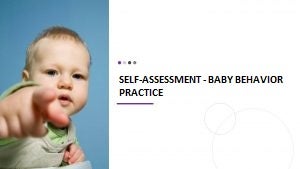In this module, you will learn about 3 common early experiences that may mislead parents into thinking that they cannot breastfeed their babies and how to help parents continue breastfeeding despite these challenges. You’ll also learn some important differences between newborn behavior and that of older babies and risk factors for poor lactation outcomes.
Objectives
By the end of this module, you will be able to:
- Describe 3 common experiences that may mislead parents into believing they cannot breastfeed their babies
- Describe the physiological and behavioral reasons for these experiences
- Describe how newborn behavior differs from that of older infants
- List risk factors for delayed onset of copious milk production
- List risk factors for poor latch and inadequate milk transfer
- Describe how best to prepare parents for needed lactation consults
Instructions:
- Click on each of the links below in order to complete the steps in this module.
- Be sure to complete each step before moving on to the next.
Step 1. Click on the image or link below to view the video:
Step 2. Click on the image or link below for a video self-assessment and practice.
Step 3. Click on the link below for a self-assessment to test your ability to apply the knowledge and skills learned in this module.
Relevant Resources
Cramton R, Zain-Ul-Abideen M, Whalen B. Optimizing successful breastfeeding in the newborn. Curr Opinion Pediatr. 2009;21(3):386-396.
DaMota K, Bañuelos J, Goldbronn J, Vera-Beccera, L, Heinig MJ. Maternal request for in-hospital supplementation of healthy breastfed infants among low-income women J Hum Lact 2012 Nov;28(4):476-82.
Hauck Y, Fenwick J, Dhaliwal S, Butt J. A western Australian survey of breastfeeding initiation, prevalence and early cessation patterns. Maternal Child Health J. 2011;15(2):260-268.
Henninger M, Irving S, Naleway A, et al. Predictors of breastfeeding initiation and maintenance in an integrated healthcare setting. J Hum Lactation. 2017;33(2):256-266.
Wallenborn J, Ihongbe T, Rozario S, Masho S. Knowledge of breastfeeding recommendations and breastfeeding duration: a survival analysis on infant feeding practices II. Breastfeeding Med. 2017;12:156-162.
Galipeau R, Dumas L, Lepage M. Perception of not having enough milk and actual milk production of first-time breastfeeding mothers: is there a difference? Breastfeeding Med. 2017;12:210-217.
Gatti L. Maternal perceptions of insufficient milk supply in breastfeeding. J Nurs Scholarship. 2008;40(4):355-363.
Kent J, Gardner H, Geddes D. Breastmilk production in the first 4 weeks after birth of term infants. Nutrients. 2016;8(12):756.
Heinig M, Follett J, Ishii K, Kavanagh-Prochaska K, Cohen R, Panchula J. Barriers to compliance with infant-feeding recommendations among low-income women. J Hum Lactation. 2006;22(1):27-38.
Pierro J, Abulaimoun B, Roth P, Blau J. Factors associated with supplemental formula feeding of breastfeeding infants during postpartum hospital stay. Breastfeeding Med. 2016;11:196-202.
Nugent J. Understanding Newborn Behavior & Early Relationships: The Newborn Behavioral Observations (NBO) System Handbook. Baltimore, MD: Brookes Pub; 2007.
Barnard K. Keys to developing early parent–child relationships. In: Lester B, Sparrow J, ed. Nurturing Children and Families. Malden, MA: Blackwell Publishing; 2010:53-63.
Hodges E, Wasser H, Colgan B, Bentley M. Development of feeding cues during infancy and toddlerhood. MCN. Am J Maternal Child Nurs. 2016;41(4):244-251.
Gay C, Lee K, Lee S. Sleep patterns and fatigue in new mothers and fathers. Biol Res Nurs. 2004;5(4):311-318.



